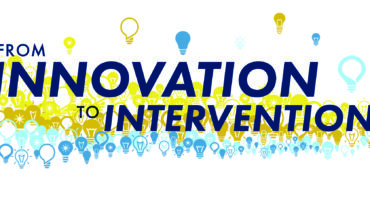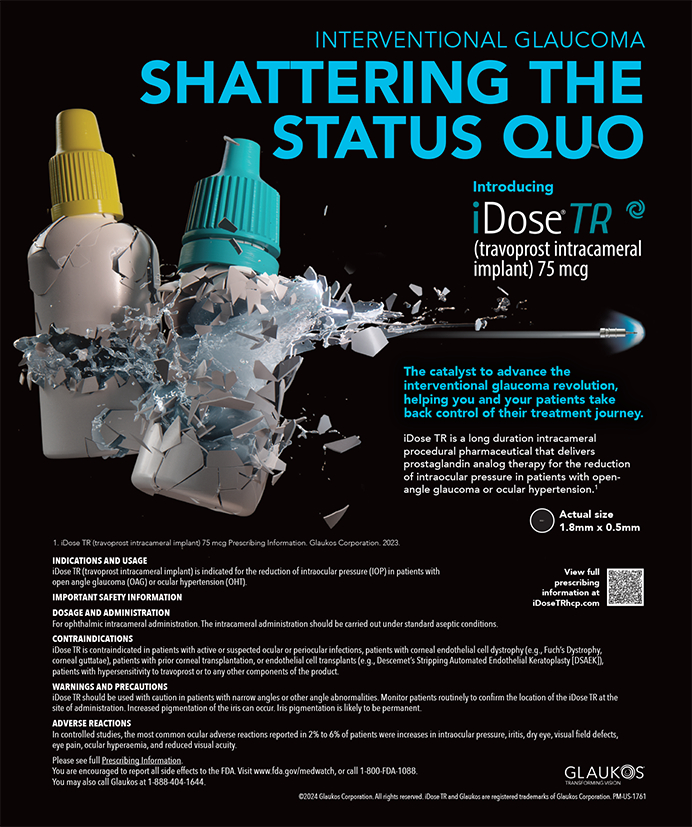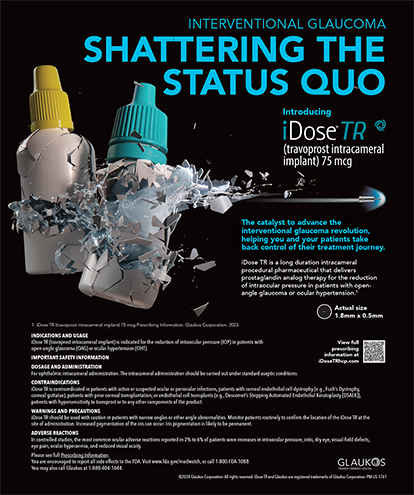
We have a unique perspective on the pathway to innovation in eye care. As ophthalmologists who have worked in the industry, we have seen firsthand the often long and winding, sometimes perilous, journey from the early stages of clinical development to drug and device approval to commercialization. This article focuses on the requirements of FDA clinical trials for drugs and touches on the marketing clearance process for surgical devices. The FDA typically averages around 50 drug approvals per year. In 2021, more than 40% of these drugs were first-in-class.1,2
APPROVAL PROCESSES
Drugs. The sidebar Glossary of Clinical Trial Terms explains the different purposes and goals of each phase of clinical trial research. About 70% to 75% of drugs advance from phase 1 (ie, first in human) to phase 2 trials. This is a critical point for any drug candidate, and only about 30% to 35% reach phase 3. During this phase, the sponsor of the study must confirm the effectiveness of the drug, continue to define its safety profile, and compare it to other treatments. Phase 3 studies are registration trials that are required for approval by agencies such as the FDA and European Medicines Agency. Less than 20% of drugs are approved and reach the market.3
Glossary of Clinical Trial Terms*
Phase: The stage of a clinical trial is designed to study a drug or biologic product based on definitions developed by the FDA. The five phases (described below) are based on the study’s objective, number of participants, and other characteristics.
Early Phase 1: Exploratory trials conducted before traditional phase 1 trials investigate how or whether a drug affects the body. Patients enrolled in early phase 1 trials have limited exposure to the drug, and the trials have no therapeutic or diagnostic goals.
Phase 1: Trials are focused on the safety of the drug and are usually conducted with healthy volunteers. The primary goal is to determine the drug’s most frequent and serious adverse events. A secondary goal is often how the drug is broken down and excreted by the body. A small number of patients are usually involved.
Phase 2: Trials gather preliminary data on whether a drug works in individuals with certain conditions or diseases (ie, effectiveness). Safety and short-term and adverse events are also evaluated.
Phase 3: Trials gather more information about the safety and effectiveness of a drug by studying its action in different populations and at different dosages and by using the drug in combination with other pharmacologic agents. More patients are typically involved than in phases 1 and 2.
Phase 4: Trials occur after the FDA has approved the drug for marketing, including postmarket requirement and commitment studies that are either required or agreed to by the study sponsor. Additional information about the safety, efficacy, and optimal use of the drug is also collected.
Health economics and outcomes research: This division of a pharmaceutical or life science company is tasked with demonstrating the value of a new drug or intervention to agencies that provide reimbursement and health care payers. The group establishes and measures the link between treatment and outcomes to provide evidence-based guidance on improving patient care.
*Sources
1. Glossary of common site terms. Clinical Trials. Accessed November 11, 2022. https://clinicaltrials.gov/ct2/about-studies/glossary
2. Health economics and outcomes research (HEOR). Definitive Healthcare. 2022. Accessed November 11, 2022. https://www.definitivehc.com/resources/glossary/health-economics-and-outcomes-research-heor
Postmarketing clinical research makes up phase 4 studies. These include smaller investigator-initiated trials (IITs) as well as larger sponsor-run, on-label trials. Conducted postapproval, IITs allow the generation of new data in a real-world setting to reflect outcomes when the product is used in the clinic as opposed to the tightly controlled environment of a registration trial. These studies are independently designed and run by clinicians with funding and material support from a company (ie, sponsor). IITs have a clear hands-off policy for sponsors with respect to the design, conduct of the study, and analysis of the data to ensure scientific integrity.4
Devices. The FDA’s established classification groups devices under 16 medical panels (ie, specialties) and assigns a regulatory class based on the level of control necessary to ensure the device’s safety and effectiveness.5 The device class also determines the type of premarket submission and application that is required for a device to receive FDA clearance to market. The sidebar Glossary of Surgical Device Classification details the different device classifications and explains common terminology used for device classification. If a similar device is already on the market, a company can use it as predicate via 510(k) submission.
Glossary of Surgical Device Classification*
General Controls: The baseline requirements of the Food, Drug and Cosmetic Act that apply to all medical devices.
Class I: General controls, with and without exemptions. If the product is not exempt, a 510(k) is required for marketing.
Class II: General controls and specific controls, with and without exemptions. If the product is not exempt, a 510(k) is required for marketing.
Class III: General controls and premarket approval. A premarket approval application is required unless the device is a preamendment device, in which case a 510(k) is required for marketing.
Preamendment Device: A device on the market before the passage of the medical device amendments in 1976 or substantially equivalent to such a device.
PMA: Premarket approval.
510(k): Also known as premarket notification, it requires device manufacturers to notify the FDA of their intent to market a medical device at least 90 days in advance of its introduction into commercial distribution or the reintroduction of a device that was significantly changed or modified, which could have affected its safety or effectiveness.
510(k) exemption: A device can be exempt from standard 510(k) requirements if the FDA determined that a 510(k) is not required to show reasonable assurance of the device’s safety and effectiveness.
*Sources
1. Classify your medical device. FDA. February 7, 2020. Accessed October 24, 2022. https://www.fda.gov/medical-devices/overview-device-regulation/classify-your-medical-device
2. 510(k) clearances. FDA. August 31, 2021. Accessed November 11, 2022. https://www.fda.gov/medical-devices/device-approvals-denials-and-clearances/510k-clearances
3. Class I and Class II device exemptions. FDA. February 23, 2022. Accessed October 24, 2022. https://www.fda.gov/medical-devices/classify-your-medical-device/class-i-and-class-ii-device-exemptions
A LONG PROCESS
The development and approval process for drugs and surgical devices is long.6 Taking an idea from bench research to a marketed drug product requires about 12 to 15 years. For surgical devices, the process may take about 8 to 10 years. Companies can reduce the timeline by using an open science model, meaning they can piggyback onto previous research done by other companies or academic research groups.
Often, a smaller startup company has only series A funding and is unable to continue to the next phase without a strategic partner. The traditional approach involves a larger company that may either partner with or fully acquire the smaller entity’s assets to help bring the investigational product to scale, run the large registration trials for FDA approval, and allow a successful launch into market. This exercise requires significant funding support and a robust commercial enterprise. Strategic partnerships between small and large companies can bring disruptive innovation to market in a timely manner. In this scenario, the smaller company develops the molecule and completes the basic science work and proof of concept studies (ie, animal and first-in-human studies), and the larger strategic partner then steps in with funding to support the translational work, often with a different research and development team.
The recent consolidation of larger companies within eye care has reduced the number of potential strategic partners available for startups. This has created an impetus for startups to explore alternate ways of obtaining funding. A private equity firm may help a small, privately held company with funding support to get a product to market. In the future, we may see more small companies develop and launch products with private equity support instead of partnering with a larger company.
PRODUCT LAUNCHES
The marketing and medical affairs teams facilitate a drug’s launch to support the salesforce. Most companies start the launch process 2 years before the presumed FDA approval. One way these teams interact with clinicians is through advisory board meetings that collect critical feedback from experts to guide how a product will be marketed. (For more on collaborating with industry, see “Bringing Meaningful Innovation to the Market.”)
Several things can hold up approval. One is chemistry, manufacturing, and controls management, otherwise known as CMC, which lays out the manufacturing practices and product specifications to ensure product consistency between batches and streamline the cost of goods. Second is safety, where early signals can point to potentially dire consequences for patients. Two others are health economics and outcomes research, or HEOR, which uses clinical and economic evidence to determine the value of a drug,7 and market access, which ensures that patients can access a drug and that it is marketed at a reasonable price. Both of these divisions in a pharmaceutical company are key to gaining market/payor access for a drug or device.
CONCLUSION
FDA drug approval and device clearance are like the Super Bowl of health care product development. Both require myriad teams to work together closely and diligently over many years. Getting from phase 1 to 3 is not easy, but there is a reasonably good probability of success for deserving drug and device candidates, all for the benefit of patients.
1. CY 2021 CDER drug and biologic calendar year approvals. FDA. December 31, 2021. Accessed October 24, 2022. https://www.fda.gov/media/158149/download
2. CY 2020 CDER drug and biologic calendar year approvals. FDA. December 31, 2021. Accessed October 24, 2022. https://www.fda.gov/media/147401/download
3. Sullivan T. A tough road: cost to develop one new drug is $2.6 billion; approval rate for drugs entering clinical development is less than 12%. Policy & Medicine. March 21, 2019. Accessed October 24, 2022. https://www.policymed.com/2014/12/a-tough-road-cost-to-develop-one-new-drug-is-26-billion-approval-rate-for-drugs-entering-clinical-de.html
4. Purpura CA. Garry EM, Honig N, Case A, Rassen JA. The role of real-world evidence in FDA-approved new drug and biologics license applications. Clin Pharmacol Ther. 2022;111(1):135-144.
5. Classify your medical device. FDA. February 7, 2020. Accessed October 24, 2022. https://www.fda.gov/medical-devices/overview-device-regulation/classify-your-medical-device
6. Freeman MW, Dervan AP. The path from bench to bedside: considerations before starting the journey. J Investig Med. 2011;59(5):746-751.
7. Holtorf AP, Brixner D, Bellows B, et al. Current and future use of HEOR data in healthcare decision-making in the United States and emerging markets. Am Health Drug Benefits. 2012;5(7):428-438.




